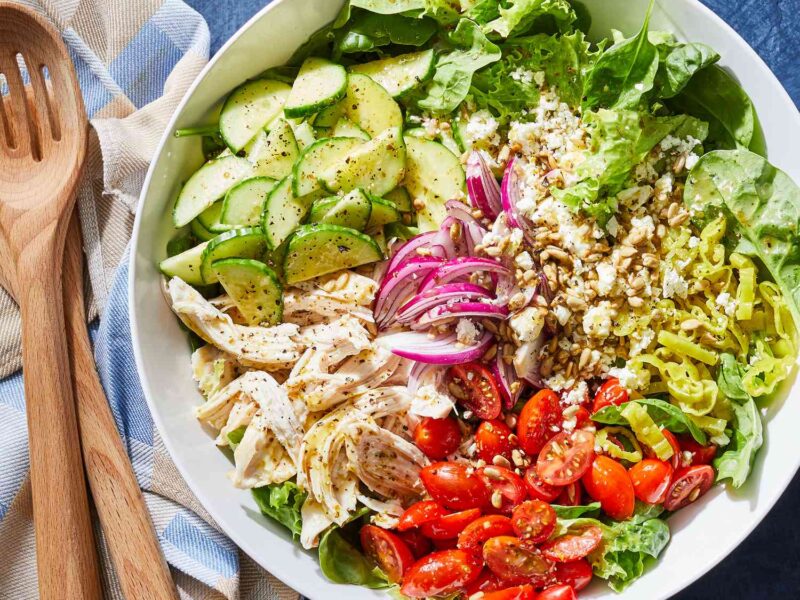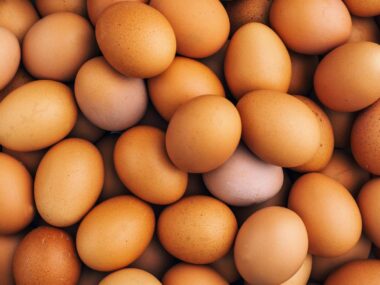In recent years, salads have undergone a transformation from side dish to star of the meal, thanks to the rise of hearty salad bowl creations. These nutrient-packed bowls are not only visually stunning but also incredibly satisfying, offering a balanced combination of flavors, textures, and wholesome ingredients. In this guide, we’ll explore the art of crafting hearty salad bowl creations that are sure to leave you feeling nourished and energized.

1. The Evolution of Salads: From Side Dish to Main Course
Traditionally, salads were relegated to the role of a supporting player on the dinner plate – a simple mix of greens with a drizzle of dressing. However, as culinary trends have evolved, so too have salads. Today, salads are no longer an afterthought but rather the focal point of the meal, packed with protein, healthy fats, and a rainbow of fresh produce. Hearty salad bowl creations have emerged as a versatile and satisfying option for lunch or dinner, offering endless possibilities for customization and creativity.
2. Building the Perfect Salad Bowl: A Symphony of Flavors and Textures
The key to a successful hearty salad bowl lies in the artful balance of flavors, textures, and nutritional components. Start with a base of leafy greens such as spinach, kale, or arugula, then layer on a variety of colorful vegetables for crunch and freshness. Next, add a source of protein – think grilled chicken, chickpeas, tofu, or hard-boiled eggs – to provide satiety and staying power. Top it all off with a sprinkling of nuts, seeds, or cheese for added flavor and texture, and finish with a drizzle of dressing to tie it all together. The result? A harmonious medley of tastes and textures that will tantalize your taste buds and satisfy your hunger.
3. Exploring Flavor Combinations: From Mediterranean to Asian-Inspired
One of the joys of creating hearty salad bowl creations is the opportunity to experiment with a wide range of flavor profiles and culinary traditions. Whether you’re craving the bright and sunny flavors of the Mediterranean or the bold and savory tastes of Asia, there’s a salad bowl combination to suit every palate. Consider topping your salad bowl with ingredients such as olives, feta cheese, and roasted red peppers for a taste of the Mediterranean, or tofu, edamame, and sesame ginger dressing for an Asian-inspired twist. The possibilities are truly endless, limited only by your imagination.
4. Elevating Salad Dressings: From Homemade Vinaigrettes to Creamy Tahini
No salad bowl creation is complete without a delicious dressing to tie it all together. While store-bought dressings certainly have their place, there’s something special about homemade vinaigrettes and creamy sauces made from scratch. Experiment with different combinations of oils, vinegars, herbs, and spices to create your own signature dressing, or try your hand at creamy tahini, avocado, or yogurt-based sauces for added richness and flavor. Not only will homemade dressings elevate the taste of your salad bowl, but they’ll also allow you to control the quality of ingredients and customize the flavor to suit your preferences.
5. Making Salad Bowls a Mealtime Staple: Tips for Meal Prep and On-the-Go Enjoyment
One of the great advantages of hearty salad bowl creations is their versatility and convenience. With a little bit of meal prep, you can enjoy delicious and nutritious salads throughout the week, whether you’re at home, at work, or on the go. Consider prepping ingredients such as cooked grains, roasted vegetables, and grilled proteins in advance and storing them in separate containers for easy assembly. Mason jar salads are another convenient option for portable meals – simply layer ingredients in a jar, starting with the dressing on the bottom and ending with the greens on top, then shake it up when you’re ready to eat. With a bit of planning and preparation, salad bowls can become a satisfying and nourishing staple of your weekly meal rotation.
6. Embracing Seasonal Ingredients: Celebrating the Bounty of the Earth
One of the joys of eating hearty salad bowl creations is the opportunity to celebrate the changing seasons and the bounty of fresh produce that each season brings. From crisp spring greens and vibrant summer berries to hearty fall squashes and root vegetables, seasonal ingredients add color, flavor, and nutritional value to your salad bowls. Embrace the seasons by incorporating a variety of fruits, vegetables, and herbs into your salad bowls, and take advantage of farmers’ markets and local produce stands to source the freshest and most flavorful ingredients available. Not only will eating seasonally enhance the taste of your salad bowls, but it will also support local farmers and promote environmental sustainability.
7. Catering to Dietary Preferences and Restrictions: Vegan, Gluten-Free, and Beyond
In today’s diverse culinary landscape, it’s important to cater to a variety of dietary preferences and restrictions when creating hearty salad bowl creations. Whether you’re cooking for vegans, vegetarians, gluten-free eaters, or those with food allergies or intolerances, there are plenty of delicious and nutritious salad bowl options to choose from. Experiment with alternative sources of protein such as tofu, tempeh, or legumes for vegan and vegetarian-friendly salads, and opt for gluten-free grains such as quinoa, rice, or buckwheat for gluten-free options. Be sure to read ingredient labels carefully and communicate with your diners to ensure that everyone’s dietary needs are met.
8. Embracing Global Culinary Traditions: From Greek to Latin-Inspired Creations
Expand your culinary horizons and add a worldly flair to your salad bowl creations by drawing inspiration from global culinary traditions. From Greek-inspired salads with tangy feta cheese, kalamata olives, and tzatziki dressing to Latin-inspired bowls with black beans, avocado, and cilantro-lime dressing, there are endless possibilities for exploring new flavors and ingredients. Experiment with ingredients such as harissa, za’atar, miso, or kimchi to add depth and complexity to your salad bowls, and don’t be afraid to mix and match flavors and textures for a truly unique and memorable dining experience.
9. Incorporating Grains, Legumes, and Seeds: Adding Texture and Nutritional Value
To transform a simple salad into a hearty and satisfying meal, consider incorporating grains, legumes, and seeds for added texture, flavor, and nutritional value. Grains such as quinoa, farro, barley, or brown rice add chewiness and substance to your salad bowls, while legumes such as lentils, chickpeas, or black beans provide protein and fiber to keep you feeling full and satisfied. Seeds such as pumpkin seeds, sunflower seeds, or sesame seeds add crunch and a nutritional boost of vitamins, minerals, and healthy fats. Mix and match these ingredients to create a salad bowl that’s as nourishing as it is delicious.
10. Indulging in Sweet and Savory Combinations: From Fruit to Cheese
One of the delights of hearty salad bowl creations is the opportunity to indulge in a variety of sweet and savory flavor combinations. Whether you’re adding fresh fruit for a touch of sweetness, or creamy cheese for richness and depth of flavor, there are endless possibilities for creating a salad bowl that satisfies all of your taste buds. Experiment with ingredients such as strawberries, apples, or grapes for a burst of sweetness, or goat cheese, blue cheese, or feta cheese for a savory counterpoint. The contrast between sweet and savory elements adds complexity to your salad bowl, making each bite a culinary adventure.










